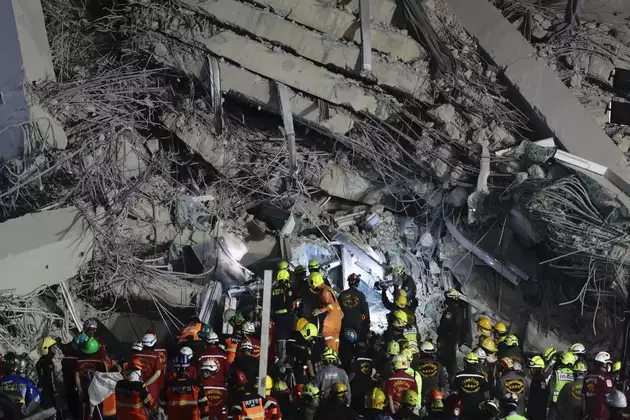Myanmar experienced another significant jolt on Saturday, with a 5.1-magnitude aftershock striking near Naypyidaw at approximately 2:50 PM local time, deepening the devastation caused by a powerful earthquake that had rocked the country just a day earlier. According to the United States Geological Survey (USGS), the tremor occurred at a shallow depth of 10 kilometers, compounding the crisis already gripping the nation.
This aftershock comes in the wake of a major earthquake on Friday, which left over 1,000 people dead and hundreds more injured across Myanmar’s central and northeastern regions. The initial tremor near Sagaing triggered a series of at least 12 aftershocks, ranging in magnitude from 2.8 to 7.5, causing widespread panic and destruction.
Worst-Hit Areas and Escalating Damage
The regions most severely impacted include Mandalay, Bago, Magway, northeastern Shan State, Sagaing, and the capital, Naypyidaw. Reports from Xinhua News Agency indicate that buildings have collapsed, roads have cracked, and public infrastructure has suffered extensive damage in these zones.
National Emergency Declared Amid Infrastructure Collapse
In response to the escalating humanitarian crisis, the Myanmar government has declared a national emergency, mobilizing rescue and relief teams across the country. However, critical infrastructure damage is slowing operations. The vital Yangon-Mandalay highway, especially the section near Naypyidaw, has been heavily damaged, forcing emergency convoys to use outdated routes. In addition, Mandalay Airport has suffered partial collapses, severely limiting air traffic and delaying the transport of aid and medical supplies.
Rescue Operations Face Severe Challenges
Despite the arrival of emergency responders and fire service teams from Lower Myanmar, efforts are being hampered by widespread power outages and communication breakdowns. Many affected areas remain cut off, making it difficult to assess the full extent of the damage or deliver timely aid. Thousands of residents are now in desperate need of food, clean drinking water, shelter, and emergency medical attention.
International humanitarian organizations are monitoring the situation closely, and regional governments have expressed willingness to assist Myanmar in relief and recovery efforts. As aftershocks continue, fears of further collapses and landslides remain high, and the situation is evolving rapidly.

